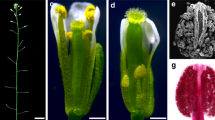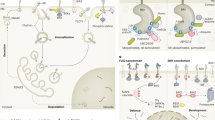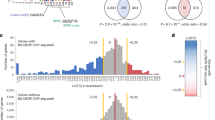Abstract
Brassinosteroid (BR) regulates gene expression and plant development through a receptor kinase-mediated signal transduction pathway1. Despite the identification of many components of this pathway, it remains unclear how the BR signal is transduced from the cell surface to the nucleus2. Here we describe a complete BR signalling pathway by elucidating key missing steps. We show that phosphorylation of BSK1 (BR-signalling kinase 1) by the BR receptor kinase BRI1 (BR-insensitive 1) promotes BSK1 binding to the BSU1 (BRI1 suppressor 1) phosphatase, and BSU1 inactivates the GSK3-like kinase BIN2 (BR-insensitive 2) by dephosphorylating a conserved phospho-tyrosine residue (pTyr 200). Mutations that affect phosphorylation/dephosphorylation of BIN2 pTyr200 (bin2-1, bin2-Y200F and quadruple loss-of-function of BSU1-related phosphatases) support an essential role for BSU1-mediated BIN2 dephosphorylation in BR-dependent plant growth. These results demonstrate direct sequential BR activation of BRI1, BSK1 and BSU1, and inactivation of BIN2, leading to accumulation of unphosphorylated BZR (brassinazole resistant) transcription factors in the nucleus. This study establishes a fully connected BR signalling pathway and provides new insights into the mechanism of GSK3 regulation.
This is a preview of subscription content, access via your institution
Access options
Subscribe to this journal
Receive 12 print issues and online access
$209.00 per year
only $17.42 per issue
Buy this article
- Purchase on Springer Link
- Instant access to full article PDF
Prices may be subject to local taxes which are calculated during checkout





Similar content being viewed by others
References
Vert, G., Nemhauser, J. L., Geldner, N., Hong, F. & Chory, J. Molecular mechanisms of steroid hormone signaling in plants. Annu. Rev. Cell Dev. Biol. 21, 177–201 (2005).
Gendron, J. M. & Wang, Z. Y. Multiple mechanisms modulate brassinosteroid signaling. Curr. Opin. Plant Biol. 10, 436–441 (2007).
Clouse, S. D. & Sasse, J. M. BRASSINOSTEROIDS: Essential Regulators of Plant Growth and Development. Annu. Rev. Plant Physiol. Plant Mol. Biol. 49, 427–451 (1998).
Belkhadir, Y., Wang, X. & Chory, J. Arabidopsis brassinosteroid signaling pathway. Sci. STKE 2006, cm5 (2006).
Li, J. & Chory, J. A putative leucine-rich repeat receptor kinase involved in brassinosteroid signal transduction. Cell 90, 929–938 (1997).
Wang, Z. Y., Seto, H., Fujioka, S., Yoshida, S. & Chory, J. BRI1 is a critical component of a plasma-membrane receptor for plant steroids. Nature 410, 380–383 (2001).
Li, J. et al. BAK1, an Arabidopsis LRR receptor-like protein kinase, interacts with BRI1 and modulates brassinosteroid signaling. Cell 110, 213–222 (2002).
Nam, K. H. & Li, J. BRI1/BAK1, a receptor kinase pair mediating brassinosteroid signaling. Cell 110, 203–212 (2002).
Wang, X. & Chory, J. Brassinosteroids regulate dissociation of BKI1, a negative regulator of BRI1 signaling, from the plasma membrane. Science 313, 1118–1122 (2006).
Tang, W. et al. BSKs mediate signal transduction from the receptor kinase BRI1 in Arabidopsis. Science 321, 557–560 (2008).
Kinoshita, T. et al. Binding of brassinosteroids to the extracellular domain of plant receptor kinase BRI1. Nature 433, 167–171 (2005).
Wang, X. et al. Sequential transphosphorylation of the BRI1/BAK1 receptor kinase complex impacts early events in brassinosteroid signaling. Dev. Cell 15, 220–235 (2008).
Li, J. & Nam, K. H. Regulation of brassinosteroid signaling by a GSK3/SHAGGY-like kinase. Science 295, 1299–1301 (2002).
Mora-Garcia, S. et al. Nuclear protein phosphatases with Kelch-repeat domains modulate the response to brassinosteroids in Arabidopsis. Genes Dev. 18, 448–460 (2004).
Gampala, S. S. et al. An essential role for 14-3-3 proteins in brassinosteroid signal transduction in Arabidopsis. Dev. Cell 13, 177–189 (2007).
Wang, Z. Y. et al. Nuclear-localized BZR1 mediates brassinosteroid-induced growth and feedback suppression of brassinosteroid biosynthesis. Dev. Cell 2, 505–513 (2002).
Yin, Y. et al. A crucial role for the putative Arabidopsis topoisomerase VI in plant growth and development. Proc. Natl Acad. Sci. U S. A 99, 10191–10196 (2002).
He, J.-X. et al. BZR1 is a transcriptional repressor with dual roles in brassinosteroid homeostasis and growth responses. Science 307, 1634–1638 (2005).
Yin, Y. et al. A new class of transcription factors mediates brassinosteroid-regulated gene expression in Arabidopsis. Cell 120, 249–259 (2005).
He, J. X., Gendron, J. M., Yang, Y., Li, J. & Wang, Z. Y. The GSK3-like kinase BIN2 phosphorylates and destabilizes BZR1, a positive regulator of the brassinosteroid signaling pathway in Arabidopsis. Proc. Natl Acad. Sci. USA 99, 10185–10190 (2002).
Ryu, H. et al. Nucleocytoplasmic shuttling of BZR1 mediated by phosphorylation is essential in Arabidopsis brassinosteroid signaling. Plant Cell 19, 2749–2762 (2007).
Vert, G. & Chory, J. Downstream nuclear events in brassinosteroid signalling. Nature 441, 96–100 (2006).
Peng, P., Yan, Z., Zhu, Y. & Li, J. Regulation of the Arabidopsis GSK3-like Kinase Brassinosteroid-insenstivie 2 through proteasome-mediated protein degradation. Mol. Plant 1, 338–346 (2008).
Hu, C. D., Chinenov, Y. & Kerppola, T. K. Visualization of interactions among bZIP and Rel family proteins in living cells using bimolecular fluorescence complementation. Mol. Cell 9, 789–798 (2002).
Benschop, J. J. et al. Quantitative phosphoproteomics of early elicitor signaling in Arabidopsis. Mol. Cell Proteomics 6, 1198–1214 (2007).
Sugiyama, N. et al. Large-scale phosphorylation mapping reveals the extent of tyrosine phosphorylation in Arabidopsis. Mol. Syst. Biol. 4, 193 (2008).
Kim, L., Harwood, A. & Kimmel, A. R. Receptor-dependent and tyrosine phosphatase-mediated inhibition of GSK3 regulates cell fate choice. Dev. Cell 3, 523–532 (2002).
Shiu, S. H. et al. Comparative analysis of the receptor-like kinase family in Arabidopsis and rice. Plant Cell 16, 1220–1234 (2004).
Johnson, K. L. & Ingram, G. C. Sending the right signals: regulating receptor kinase activity. Curr. Opin. Plant Biol. 8, 648–656 (2005).
Zhou, A., Wang, H., Walker, J. C. & Li, J. BRL1, a leucine-rich repeat receptor-like protein kinase, is functionally redundant with BRI1 in regulating Arabidopsis brassinosteroid signaling. Plant J. 40, 399–409 (2004).
Cano-Delgado, A. et al. BRL1 and BRL3 are novel brassinosteroid receptors that function in vascular differentiation in Arabidopsis. Development 131, 5341–5351 (2004).
Hughes, K., Nikolakaki, E., Plyte, S. E., Totty, N. F. & Woodgett, J. R. Modulation of the glycogen synthase kinase-3 family by tyrosine phosphorylation. EMBO J. 12, 803–808 (1993).
Bhat, R. V. et al. Regulation and localization of tyrosine216 phosphorylation of glycogen synthase kinase-3β in cellular and animal models of neuronal degeneration. Proc. Natl Acad. Sci. USA 97, 11074–11079 (2000).
Kim, L. & Kimmel, A. R. GSK3 at the edge: regulation of developmental specification and cell polarization. Curr. Drug Targets. 7, 1411–1419 (2006).
Cole, A., Frame, S. & Cohen, P. Further evidence that the tyrosine phosphorylation of glycogen synthase kinase-3 (GSK3) in mammalian cells is an autophosphorylation event. Biochem. J. 377, 249–255 (2004).
MacKintosh, C. et al. Further evidence that inhibitor-2 acts like a chaperone to fold PP1 into its native conformation. FEBS Lett. 397, 235–238 (1996).
Alonso, J. M. et al. Genome-wide insertional mutagenesis of Arabidopsis thaliana. Science 301, 653–657 (2003).
Schwab, R., Ossowski, S., Riester, M., Warthmann, N. & Weigel, D. Highly specific gene silencing by artificial microRNAs in Arabidopsis. Plant Cell 18, 1121–1133 (2006).
Yamada, K. et al. Empirical analysis of transcriptional activity in the Arabidopsis genome. Science 302, 842–846 (2003).
Deng, Z. et al. A proteomics study of brassinosteroid response in Arabidopsis. Mol. Cell Proteomics 6, 2058–2071 (2007).
Acknowledgements
We thank J. Chory for providing the bsu1-D seeds and BSU1 cDNA clone and D. Bhaya and K. Barton for comments on the manuscript. Research was supported by grants from NIH (R01GM066258), the National Science Foundation (0724688), the US Department of Energy (DE-FG02-08ER15973) and the Herman Frasch Foundation. The UCSF Mass Spectrometry Facility is supported by the Biomedical Research Technology Program of the National Center for Research Resources, NIH NCRR (RR01614, RR012961 and RR019934).
Author information
Authors and Affiliations
Contributions
S.G. and A.L.B. carried out LC-MS/MS analysis. Y.S.1 and Z.D. were involved in 2D PAGE immunoblotting. J.X.S. and Y.S.3 developed BIN2 antiserum. W.T. generated GST–BSK1 proteins. T.W.K. performed all other experiments. T.W.K and Z.W. designed the experiments, analysed data and wrote the manuscript.
Corresponding author
Ethics declarations
Competing interests
The authors declare no competing financial interests.
Supplementary information
Supplementary Information
Supplementary Information (PDF 1269 kb)
Rights and permissions
About this article
Cite this article
Kim, TW., Guan, S., Sun, Y. et al. Brassinosteroid signal transduction from cell-surface receptor kinases to nuclear transcription factors. Nat Cell Biol 11, 1254–1260 (2009). https://doi.org/10.1038/ncb1970
Received:
Accepted:
Published:
Issue Date:
DOI: https://doi.org/10.1038/ncb1970
This article is cited by
-
Coordinated regulation of vegetative phase change by brassinosteroids and the age pathway in Arabidopsis
Nature Communications (2023)
-
BnaC01.BIN2, a GSK3-like kinase, modulates plant height and yield potential in Brassica napus
Theoretical and Applied Genetics (2023)
-
GhBES1 mediates brassinosteroid regulation of leaf size by activating expression of GhEXO2 in cotton (Gossypium hirsutum)
Plant Molecular Biology (2023)
-
Genome-Wide Identification and Expression Analysis of BES1 Family in Catharanthus roseus
Journal of Plant Growth Regulation (2023)
-
RNA sequencing in Artemisia annua L explored the genetic and metabolic responses to hardly soluble aluminum phosphate treatment
Functional & Integrative Genomics (2023)



